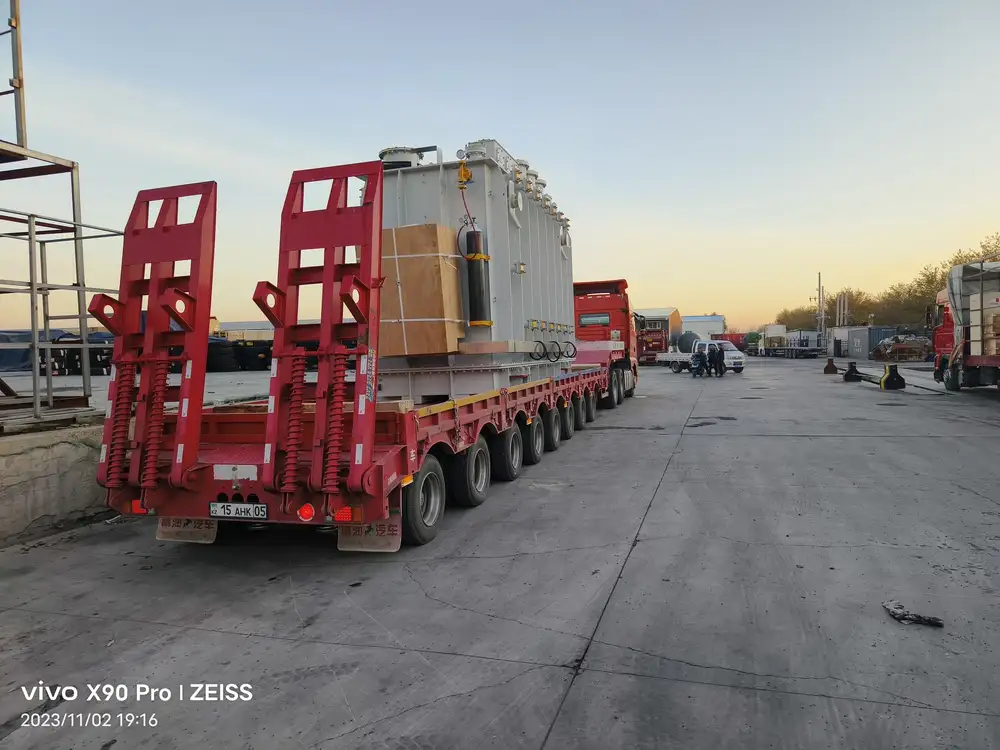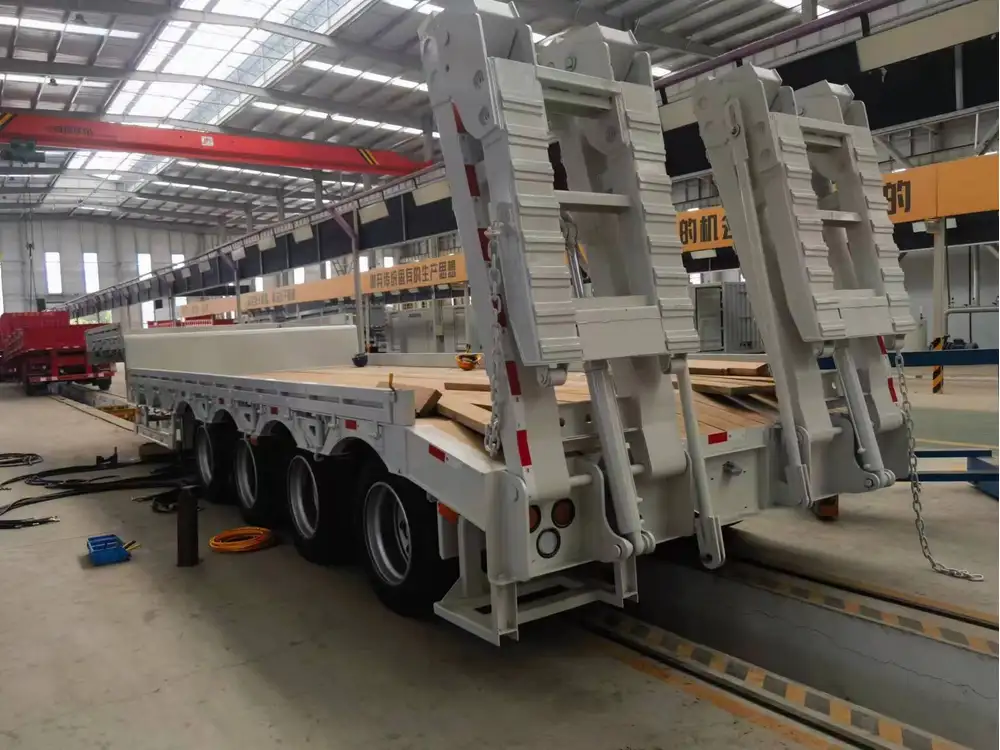Dump trailers are indispensable tools in various industries, from construction to landscaping, enabling the efficient transport and unloading of materials. However, knowing how to manually lower a dump trailer can be crucial, especially in situations where the hydraulic system may fail or when there’s a need for precision unloading. This article will provide you with detailed, step-by-step instructions and essential considerations for manually lowering your dump trailer, ensuring your operations run smoothly.
Understanding Dump Trailer Mechanics
Before diving into the manual lowering process, it’s essential to understand the basic components and mechanics of a dump trailer. A dump trailer typically comprises the following parts:
- Hydraulic Cylinder: The primary actuator that lifts and lowers the trailer bed.
- Control Valve: Manages the flow of hydraulic fluid, controlling the lifting and descending of the trailer bed.
- Power Source: Usually a 12-volt battery or a truck’s power supply that provides energy to the hydraulic system.
- Frame and Axles: Provide support and stability to the trailer during transport.
Why Manual Lowering Might Be Necessary
Situations that may require manual lowering of a dump trailer include:
- Hydraulic System Failure: If there’s a leak or power loss, manual operation becomes essential.
- Precision Unloading: For projects requiring careful placement of materials, manual lowering can provide finer control.
- Maintenance: During maintenance checks, manually lowering the trailer may be necessary to inspect or repair the hydraulic system.

Tools Required for Manual Lowering
To safely and effectively lower a dump trailer manually, you will need the following tools:
| Tool | Purpose |
|---|---|
| Wrench Set | To disengage hydraulic connections. |
| Hydraulic Fluid | To refill any low levels and ensure system integrity. |
| Safety Gear | Gloves and protective eyewear for personal safety. |
| Jack Stand | To support the trailer in case of an emergency. |
| Chock Blocks | To prevent the trailer from rolling. |
Step-by-Step Guide to Manually Lower a Dump Trailer
Step 1: Safety First
Before starting the process, safety should be your top priority. Ensure that:
- The dump trailer is on a flat surface.
- The truck is in “Park” with the parking brake engaged.
- You wear protective gloves and eyewear to safeguard against hydraulic fluid leaks.

Step 2: Prepare the Trailer
- Disconnect Power Source: Unscrew and disconnect any power supply leading to the hydraulic system. This minimizes risks of accidental engagement.
- Chock the Wheels: Place chock blocks in front of and behind the trailer wheels to prevent movement. This is critical for maintaining stability while you work.
Step 3: Locate the Manual Override
Most dump trailers come equipped with a hydraulic system that has a manual override. This may be located near the control valve. If you’re unsure, refer to your manufacturer’s manual for specific instructions related to your model.
Step 4: Engage the Manual Override
- Remove the Hydraulic Line: If applicable, use the wrench to loosen the hydraulic line connected to the cylinder. Be cautious as hydraulic fluid may leak.
- Use the Manual Handle: Engage the manual operation handle (if available). This is often a lever or a crank located near the hydraulic system.

Step 5: Slowly Lower the Trailer
- Crank or Pull the Handle: Begin to crank or pull the handle gently to lower the trailer bed. It’s important to do this slowly to avoid sudden drops that could cause injury or damage.
- Monitor Fluid Levels: As the cylinder retracts, watch for any signs of hydraulic fluid leakage or unusual noises that could indicate mechanical failure.
Step 6: Secure the Trailer Bed
Once the trailer bed has reached the desired position:
- Lock the Hydraulic Cylinder: Engage any locking mechanism your unit may have to keep the trailer bed securely in place.
- Reconnect the Hydraulic Line: If you disconnected the hydraulic line, be sure to reattach it correctly to avoid further issues.
Step 7: Final Checks
- Inspect the hydraulic system for any leaks.
- Make sure all tools are removed from the area.
- Perform a final check of the trailer’s stability before resuming normal operations.

Troubleshooting Common Issues
While lowering your dump trailer manually might seem straightforward, certain issues can arise. Here’s a quick troubleshooting guide:
| Issue | Possible Solution |
|---|---|
| Hydraulic Fluid Leakage | Tighten connections; replace damaged seals. |
| Manual Override Not Engaging | Check for obstructions, or consult the manual for issues. |
| Crank Handle Stiff | Apply lubricant to the handle; ensure the mechanism is free of debris. |
| Trailer Not Lowering Properly | Check for hydraulic blockages; ensure the manual handle is fully engaged. |
Maintenance Tips for Long-Lasting Performance
Regular maintenance can prevent many issues related to both the hydraulic and manual operations of your dump trailer. Follow these tips to keep it in peak condition:
- Inspect Hydraulic Fluid Levels: Regularly check and refill hydraulic fluid to maintain system integrity.
- Clean the Components: Ensure that all components are free from dirt and debris, which can cause mechanical failures.
- Examine the Wiring: Check electrical connections for corrosion or damage to prevent power loss.
- Lubricate Moving Parts: Any moving parts associated with the manual override should be regularly lubricated to maintain functionality.
Conclusion
Mastering the technique of manually lowering a dump trailer is a vital skill for professionals in various fields, especially in the construction and landscaping sectors. By understanding the mechanics of your trailer, utilizing the proper tools, and following a systematic approach, you can ensure smooth mission-critical lifting and lowering tasks. Always prioritize safety, and don’t neglect regular maintenance to prolong the life and functionality of your equipment.
By adhering to this comprehensive guide, we hope to equip you with the knowledge and confidence necessary to manually operate your dump trailer with precision and safety in mind. Whether facing hydraulic failure or requiring meticulous unloading, your expertise will shine through, facilitating successful operations and enhancing overall productivity.



